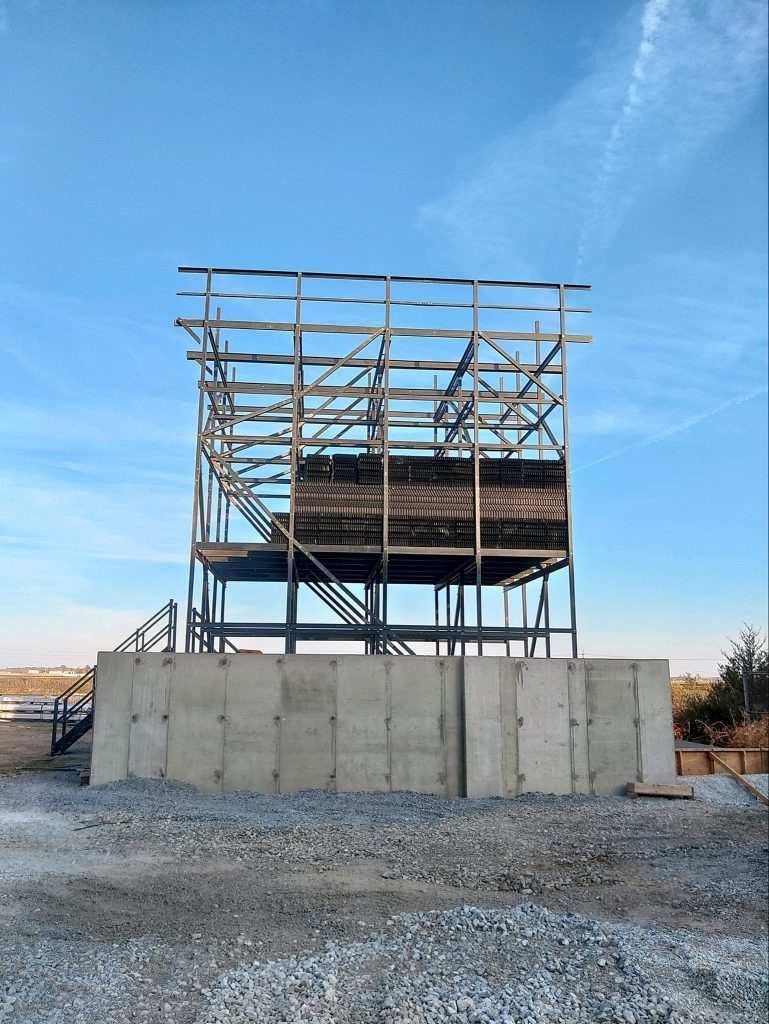Water Quality Requirements for Cooling Towers Proper water quality is critical for cooling tower efficiency, longevity, and prevention of scaling, corrosion, and microbiological growth. Below are the key water quality parameters and their recommended limits:
**1. Physical & Chemical Parameters
Parameter Recommended Range Impact of Poor Quality pH Level 7.0 – 9.0 Low pH (<7) → Corrosion Total Dissolved Solids (TDS) < 2,500 ppm (max 3,500 ppm) Scaling, reduced heat transfer Hardness (CaCO₃) < 500 ppm Scaling (CaCO₃ deposits) Alkalinity < 500 ppm High alkalinity → Scaling Chlorides (Cl⁻) < 500 ppm (SS), < 200 ppm (MS) Corrosion (pitting in metal parts) Sulfates (SO₄²⁻) < 500 ppm Scaling (CaSO₄ deposits) Silica (SiO₂) < 150 ppm Hard silicate scaling Iron (Fe) < 0.5 ppm Fouling, deposits Manganese (Mn) < 0.2 ppm Staining, deposits Turbidity < 10 NTU Clogging, biofilm growth
**2. Microbiological Control
Parameter Recommended Limit Risk of Non-Compliance
Total Bacteria Count < 10⁴ CFU/mL Biofouling, Legionella risk Legionella spp. 0 CFU/mL (Zero tolerance)Legionnaires’ disease Algae & Fungi Minimized (via biocides) Clogging, odor
**3. Treatment & Maintenance Guidelines
A. Scale & Corrosion Control
Scale Inhibitors : Phosphonates, polyacrylates.Corrosion Inhibitors : Molybdate, zinc, orthophosphates.Softening : Ion exchange for high-hardness water.
B. Microbial Control
Oxidizing Biocides : Chlorine (1–3 ppm), bromine, ozone.Non-Oxidizing Biocides : Isothiazolin, glutaraldehyde (for biofilm).Regular Cleaning : To prevent biofilm buildup.
C. Blowdown Management
Cycles of Concentration (COC) : 3–6 cycles (depends on makeup water quality).Automatic Bleed-off Systems : Maintain TDS within limits.
**4. Water Sources & Their Challenges
Source Common Issues Solution
Municipal Water Chlorine, moderate hardness Filtration + antiscalants Borewell/Groundwater High TDS, hardness, iron Softening, RO (if needed) Surface Water (River/Lake) Organics, algae, silt Filtration + biocides Seawater (Coastal Plants) High chlorides, corrosion FRP materials, corrosion inhibitors
**5. Consequences of Poor Water Quality
Scaling → Reduced heat transfer efficiency.Corrosion → Damage to metal parts (pipes, heat exchangers).Biofouling → Clogged nozzles, Legionella risk.High TDS → Increased blowdown, water wastage.
Best Practices for Cooling Tower Water Management ◉ Regular Testing (pH, TDS, microbiological).Automated Chemical Dosing (for consistent treatment).Side-stream filtration (removes suspended solids).Legionella Risk Assessment (ASME, CDC guidelines).
